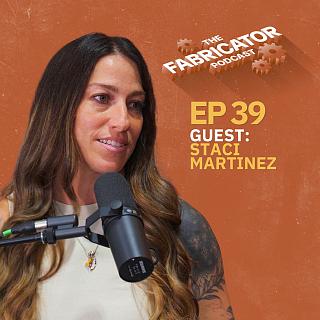Making art and helping inspire future welders with Staci Martinez
Staci Martinez joins The Fabricator Podcast to talk about starting her own small business in Sioux Falls, S.D. called 605 Shield Maiden, which focuses on creating metal art sculptures, fabricating handrails, and combing wood and metal to make furniture.
She discusses how working briefly as a production welder and seeing all the potential in the scrap metal bin inspired her to pursue metal art. Staci eventually created her first sculpture, a gnome, and was chosen to have it on display at SculptureWalk, an exhibit of outdoor sculptures displayed year-round in downtown Sioux Falls.
She also talks about her involvement with The Hooded Heroes Foundation, which serves to help provide welding equipment and PPE to those who can't afford.
At the top, hosts Dan Davis and Josh Welton talk about unfortunate metal sculptures, including the infamous Cristiano Ronaldo bust at an airport in Portugal.
Email us at podcast@fmamfg.org with any comments, questions, or suggestions.
In This Episode
Learn more about Nuts, Bolts, & Thingamajigs, FMA's foundation.
Learn more about the 2024 FMA Annual Meeting in Florida.
Check out Staci Martinez's metal art on Instagram.
Read more about about Staci's career.
Check out The Hooded Heroes Foundation.
ABOUT THE FABRICATOR PODCAST
The Fabricator Podcast brings you conversations with people in manufacturing who make things out of metal. We speak with manufacturers, metal fabricators, welders, job shop owners, small business entrepreneurs, artists, marketers, educators, and more. Host Dan Davis also goes beyond discussing just manufacturing and the skilled trades, and chats about pop culture, current events, food, music, movies, comedy, and, of course, robots. The Fabricator Podcast is presented by the Fabricators & Manufacturers Association.
Host: Dan Davis
Producer/Editor: Gareth Sleger
Video Producer/Editor: Brandon Geier
Ad writer/spokesperson/social media: Sara Spring
Additional video editing: Dana Wiker
Graphics: Billy Kulpa
Marketing support: Elizabeth Gavin, Mary Diamond
Sales support: Andy Flando, Amy Hudson
Web support: Mike Owens, Jared Carlow
Additional support: Ed Youdell, Maurine Semevolos, Lincoln Brunner, Tim Heston, Rafael Guerrero, Josh Welton, Darla Welton, Amanda Carlson-Hicks, Callie Check, Rick Lehnhardt, Judy Steinbach.
Where to listen to The Fabricator Podcast:
Follow The FABRICATOR:
- YouTube
TRANSCRIPT
Staci Martinez: When you're stuck and getting to that point where your almost just going to throw in the towel, you can talk to somebody right then and there and just be like, "Hey, how do I do this? I'm getting super frustrated. I'm about ready to quit. I just can't handle it. Can you help me? What do you suggest?" And I have a lot of friends that will help me do that.
Josh Welton: Sometimes you need emotional support. And sometimes, you need actual, "How do I do this?"
Staci Martinez: Yeah. That ain't no lie.
Josh Welton: Got to.
Staci Martinez: Talk me down, please.
Sara Spring: Nuts, bolts, and thingamajigs. The charitable Foundation of the Fabricators and Manufacturers Association is on a mission to shape the future of manufacturing by helping people explore careers in this exciting field. With your help, NBT provides scholarships, grants, and other resources to support the next generation of makers and build a strong, innovative manufacturing industry for years to come. Learn more about NBT and how you can get involved today at fmamfg.org.
Dan Davis: Welcome to The Fabricator Podcast. Dan Davis of The Fabricator Magazine, and my co-host today is Josh Welton.
Josh Welton: Hello.
Dan Davis: Hello, Josh.
Josh Welton: Hi.
Dan Davis: We are interviewing Staci Martinez of 605 Shield Maiden. During the discussion, we were talking about sculptures, and large scale sculptures, and we segued into frightening sculptures.
Josh Welton: I started talking about wanting just to drop art in the middle of places. I want to do a RoboCop sculpture, a huge one, and just drop it in the middle of Detroit. Then Staci brought up the Jason Voorhees sculpture.
Dan Davis: Right.
Josh Welton: Which is incredible.
Gareth Sleger: Yeah, in the bottom of the lake in-
Dan Davis: It's in Lake Crystal, Minnesota. And obviously, you all are going to have to get a little wet if you want to see this up close. But yeah, it's a little unnerving if you don't know it's there.
Josh Welton: I mean, if you're diving and you come across a full-sized... Imagine yourself, one of the loneliest places you just can be is underwater. You don't hear anything. There's no ambient sound except for whatever rushing, bubbling or whatever. I don't know. I don't dive. But underwater, you're alone. And then you come across a life-sized statue. You don't know it's a statue. It could be Jason Vorhees just standing there. Like murky, murky water, and as you get closer, it's like bam, Jason Vorhees.
Dan Davis: Right.
Gareth Sleger: Or you're trying to frantically kayak away from it when you're in the middle of it.
Josh Welton: Yeah. Like-
Gareth Sleger: That's when you just fall in.
Josh Welton: Yeah, that's when you die. And we started talking about scary, scary sculptures. Some intentional, some not so much.
Dan Davis: You brought up the Ronaldo bust.
Josh Welton: The Ronaldo bust-
Dan Davis: That's it-
Josh Welton: ... was supposed to be amazing. And it is amazing. Just not-
Dan Davis: And if you don't even know it, you will recognize it because it made its rounds pretty widely.
Josh Welton: It's maybe one of the worst sculptures for one of the most famous sports athletes, entertainment personalities in the world.
Dan Davis: The hair's pretty good.
Gareth Sleger: And I think it was at his hometown's regional airport in Portugal.
Josh Welton: That could be, yeah. They should have had somebody else do it.
Gareth Sleger: Oh, it's there.
Josh Welton: He looks pretty goofy right there. So maybe, I don't know.
Dan Davis: I don't know. Maybe it's closer to-
Josh Welton: No, it's not.
Dan Davis: ... reality than we think.
Josh Welton: No, it's not.
Dan Davis: Now that we're riffing earlier about Garbage Pail Kids in another conversation-
Josh Welton: Yeah, that's true.
Dan Davis: ... I'm thinking I'd want to see a sculpture garden of Garbage Pail Kids.
Gareth Sleger: That's not a bad idea.
Dan Davis: All right, put that on the to-do list.
Josh Welton: Yeah, we'll put that on the list.
Gareth Sleger: Commission somebody to do a series of Garbage Pail Kids?
Josh Welton: The Fabricator needs to commission me to do a series of Garbage Pail sculptures for the office. For the head office.
Dan Davis: At FMA?
Josh Welton: Yes, at FMA.
Gareth Sleger: That's it.
Dan Davis: Luckily, I have that much influence in this organization. After that suggestion, I might find myself on the outside of these glass roll.
Gareth Sleger: Yeah, right.
Dan Davis: All right. Say goodbye to my career and enjoy this interview with Staci Martinez.
Sara Spring: Navigate your leadership journey at the FMA Annual Meeting, February 27th to the 29th in Clearwater, Florida. At this premier event, you'll connect with top leaders in the fabrication industry to share ideas, collaborate to solve business challenges, and build strategic relationships. Chart your course for success in 2024 and beyond at the FMA Annual meeting. Find all the details@fmamfg.org. And now back to the episode.
Dan Davis: Welcome back. Josh to my left, and Staci to our right. Hello, Staci.
Staci Martinez: Hi.
Josh Welton: Hi, Staci.
Dan Davis: Hello, Josh.
Josh Welton: Hi, Dan.
Staci Martinez: Hi, Dan.
Dan Davis: Hello. Let's go. You've been in the pages of The Welder-
Staci Martinez: Yes, I have.
Dan Davis: ... and that's where I at least first got introduced to you. You're active on social media. Can you give our listening public an idea of just who Staci might be?
Staci Martinez: I'm a metal artist. I weld and make sculptures. I'm on the sculpture walk downtown in my city. It's one of the biggest sculpture walks in the world.
Dan Davis: And that's Sioux Falls, South Dakota.
Staci Martinez: Sioux Falls, South Dakota. Yep.
Dan Davis: How did you get involved in welding?
Staci Martinez: Oh. Long story, but to cut it short, I was inventory management at a manufacturing facility. They ran short on welders. They asked me if I wanted to and I said no. And then they were persistent and asked me again, and I was like, "Okay." I tried it and I fell in love with it, so here I am today.
Dan Davis: And you stuck with that for two years, right? Or did you go between your old job in welding?
Staci Martinez: Actually, while I was welding, my husband and I quit welding at that job so my husband and I can start our own wood floor company. So, we did that. I worked side by side for with him for years. And then about three years ago, I started my own business doing welding because that's where my heart is.
Dan Davis: At that moment when you were asked to try out welding, you kind of know at that moment you're into it?
Staci Martinez: Oh yeah, as soon as I did it. At first, I was terrified of it because I thought I was going to get burned. Then I did it, and yeah, I loved that and I'm like-
Josh Welton: That first time you strike an arc.
Staci Martinez: Yeah. And I'm like, "I have to continue to do this." I just felt like that's where my passion was. And yeah, that's where I found out that's where my artistic side is.
Dan Davis: And even as you're doing, what I guess, was production welding, right?
Staci Martinez: Yeah, like advanced.
Dan Davis: You had an idea of what you could do with that talent?
Staci Martinez: Yeah. I had a lot of people surrounding me, so that's how I learned. Everybody came up to me and was like, "Hey, why don't you try it this way or that way?" And some of them made art, metal art, and sold it. Things like that. And I'm just like, "I can totally do that." And then I would see stuff in the scrap bin, just look at it, and I'd just see things. I'm like, "I can totally make something with that."
Dan Davis: Right.
Staci Martinez: Yeah, that's how that came about.
Dan Davis: Did you come across a lot of people in your classes with similar stories?
Josh Welton: Not necessarily in the... Well, yeah, there's some in the classes. But just in general, it's a really common thread for... Especially, people who get into it and then thrive with it, is that first spark, you're hooked. It's like the first one's free and then you're done for life. You have to weld.
Staci Martinez: Right.
Josh Welton: After that, it's a lot of, "What's available?" Because you're not just going to go buy a bunch of raw materials, so you're practicing on scrap. And then it's like, "This is kind of boring. I could probably make something out of this scrap." Then you start. It's the evolution of a welding artist kind of.
Dan Davis: Right.
Josh Welton: That seems like a pretty common thread. So yeah, you do see that a lot. And it's not that it happens a lot. It's just that when it happens, that seems to be a common scene.
Dan Davis: What got you back into it after the interval of you starting your own business with your husband?
Staci Martinez: That's what I wanted to do. Welding was where my heart was. And so I'm just like, "I'm going to do this." I first started off just making wood furniture and things like that, just to get enough money to get my welder. So, I got my welder and it just followed through with that. I just did little small things. I woodburn, I do all kinds of other stuff. So once I got enough money from doing that, then I started buying my welding equipment little by little until I am where I am today.
Dan Davis: How's that progression been in terms of talent development?
Staci Martinez: Amazing. I also fabricate table legs and things like that, too. Learning through that, brings that stuff into the artist side.
Josh Welton: Is there a collaboration with your husband when you're doing table legs? Is there any... Does he do any woodworking beyond the floor or is it mostly the flooring?
Staci Martinez: Eventually, we'll want to lead up to that later on down the line.
Josh Welton: Got you.
Staci Martinez: But no. I do collaborations with my friend, Bryce. He does the top part and we do that stuff for a home builder.
Josh Welton: Got you.
Staci Martinez: So, he'll do the top part. I do the bottom part.
Dan Davis: Wow. Railings as well? I've seen a-
Staci Martinez: I do hand railings. I do not love hand railings, so that is not where my...
Dan Davis: Right.
Staci Martinez: Fabricating isn't where my heart is. I want to make art full-time. Sculptures, things like that. Big sculptures. That's why I got my CNC machine and things like that. That was the purpose behind getting that.
Dan Davis: Wow.
Josh Welton: How large do you want to go with the sculptures?
Staci Martinez: As big as I possibly can. I mean, I only work out of a four-stall garage right now, so it's not super high but-
Josh Welton: That's right. She pointing to my wife because you're listening. She's trying to get-
Dan Davis: Yeah. Darla's off to the side here.
Josh Welton: She's off to the side, our audience. She keeps trying to get me to do larger scale sculptures. So, I'm always interested into how the progressions that an artist goes from what they're doing on a bench to all of a sudden, now they're making something two-stories tall.
Staci Martinez: Yeah. Something they got to climb?
Josh Welton: Yeah.
Staci Martinez: That's the goal.
Dan Davis: Your piece on the sculpture wall, can you tell us about that?
Staci Martinez: Sure. It was a commission piece initially, and he was called The Roaming Gnome. And the point of him was his backpack is functional, so they wanted to be able to put something nice to make somebody's day in the back. Maybe movie tickets or-
Josh Welton: Oh, that's cool.
Staci Martinez: Yeah. Like, gift cards, things like that. He was supposed to be put on somebody's porch. So then when I met with the lady to give her to him, she's just like, "This thing is way more than I expected. I think he can do better things than what is happening right now." So I was like, "Okay." And he wasn't my first. So, I have a vision board. He wasn't my first thing that I wanted to put on the sculpture walk, but he ended up being that way. I ended up creating the rest of him, the leaf on the bottom, the mushrooms, and then I entered him.
Dan Davis: Wow. That's pretty awesome.
Staci Martinez: Thank you.
Dan Davis: I'd love to see something like that, like 20-feet tall.
Staci Martinez: Right? Look at his [inaudible 00:11:43]. That's my favorite part.
Gareth Sleger: They only likes big art.
Dan Davis: I like big fantasy-based art. A giant troll in a hometown should do. Everybody did it.
Staci Martinez: Right.
Josh Welton: That's cool.
Dan Davis: [inaudible 00:11:53] It's not a troll.
Staci Martinez: Yeah, not a troll.
Dan Davis: I don't want to bring your artwork down.
Staci Martinez: See, the backpack is functional. I had to tack it on there though, for the sculpture walk, because there are vandals.
Dan Davis: I was about to say, yeah.
Josh Welton: Oh, yeah.
Staci Martinez: There's vandals, so-
Dan Davis: The commission piece was meant to be just kind of something that roamed amongst some friends or family?
Staci Martinez: Yeah. Just passed along.
Dan Davis: So where is this in your journey in terms of a metal artist? Are you to the point where you felt confident in your skills or early on?
Staci Martinez: This is my- I didn't feel confident doing him, but I had no idea that it was going to turn out like that. So that's just... Yeah, he's my first actual piece. I've done other small things but nothing like that.
Dan Davis: Okay.
Gareth Sleger: What was the hardest part of doing that? Because I'm looking at the hands, they're actually pretty well done, and the feet. You see a lot of artists, even if they're just painting or drawing, they avoid trying to draw hands because it's the hardest thing to-
Josh Welton: Yep.
Staci Martinez: His hands were actually the easiest thing to me, really.
Gareth Sleger: Was it? Really?
Staci Martinez: Yeah.
Josh Welton: Human figures are difficult because if you don't get the proportions right, it just looks funky.
Dan Davis: Right.
Josh Welton: So that's why you see a lot of metal artists that try to skirt certain things. Taking on that challenge, that only leads to then you're doing. When you were asking about confidence, for me personally, the confidence only came from doing the work. And then after a while... Like every project, I was like, "This is going to suck. [inaudible 00:13:10] I'm not doing a good job." And I get done with it and then I'd be like, "Oh, I did that." And then the next time someone asked, it was like, "Okay, maybe." And as you progress, all of a sudden, it gets to the point where you're like, "Okay, I can handle anything they throw at me because I've overcome these problems so many times."
Staci Martinez: Right. Yeah, the confidence just comes with putting yourself out there, doing it more, not really giving a crap what other people say about your work. Just keep doing it because you're just going to get better.
Dan Davis: How have you progressed in terms of scope of projects or sophistication of projects?
Staci Martinez: I don't know if you guys have ever heard of Tough as Nails, the show.
Dan Davis: Yeah, I think I have.
Staci Martinez: The season one winner, Murph, I did an emblem for the front of his truck that he won.
Josh Welton: Oh, sweet.
Staci Martinez: I sculpted that out and painted that one. So, he drives around with that on the front of his truck.
Dan Davis: There we go. The original.
Josh Welton: What's your next project at?
Staci Martinez: Sure. The city of Baltic, South Dakota has reach out and ask me to do a permanent veterans memorial piece that will sit out... It's like six panels, 10-feet tall, and they'll have cutouts of each military branch. So yeah, the-
Dan Davis: Wow.
Josh Welton: Like the emblem for the-
Staci Martinez: Yeah. It'll have the emblem at the top and then a cutout of a veteran on there.
Josh Welton: Okay, cool. That's awesome.
Dan Davis: Do you have any idea how you might want to approach that? Is that-
Staci Martinez: Oh, yeah. It'll be stainless steel and I'm using my CNC machine. So they're not like they're flat panels. They'll just be cut out and lasered. Or not laser, but plasmid.
Dan Davis: They are actually like just 2D? A flat sheet metal?
Staci Martinez: Yeah.
Dan Davis: Got you.
Staci Martinez: Sheet metal with the sides. I think I'm going to use two by two tubing.
Dan Davis: When's that going to be installed?
Staci Martinez: Hopefully, by next year. I'll be working through the winter on it, on each panel.
Dan Davis: Okay, cool.
Josh Welton: What's the size?
Staci Martinez: Ten foot by two foot wide. I'm super excited about this one because my dad was a veteran.
Dan Davis: Oh, wow.
Josh Welton: Excellent.
Staci Martinez: And it's a permanent fixture in a park, so...
Dan Davis: That's awesome. Is that near Sioux Falls?
Staci Martinez: Yeah. It's about, I don't know, 15, 20 minutes. So, super close.
Dan Davis: Okay. All right. In the neighborhood. So what's it like with the new tools in your shop?
Staci Martinez: I love it. Anything to help me progress. And all this stuff, I learned by myself. I'm pretty much self-taught and everything. So as I learn, I have friends that I can reach out to, that help me with anything. Any questions that I have, stuff like that. I'm super grateful for that.
Josh Welton: Having those resources is invaluable. You can read all you can and you can watch videos, but having someone you can actually pick their brain and maybe watch them do something is... Nothing beats that. Accelerates the learning curve so quickly.
Staci Martinez: It really does. And when you're stuck and getting to that point where you're almost just going to throw in the towel, you can talk to somebody right then and there and just be like, "Hey, how do I do this? I'm getting super frustrated. I'm about ready to quit. I just can't handle it. Can you help me? What do you suggest?" And I have a lot of friends that will help me do that.
Josh Welton: Sometimes you need emotional support and sometimes you need actual, "How do I do this?"
Staci Martinez: Yeah, that ain't no lie. Talk me down, please.
Dan Davis: Is there an example like that?
Staci Martinez: So with that gnome, I had no idea what I was doing. My friend, Evan-
Josh Welton: Join the club.
Staci Martinez: ... he lives in Kentucky, like far. He does sculptures and things like that too, so I just reach out his eveco.com. So I reached out to him, and a lot of times... Even if it was something so stupid like, "Why is this arrows leaking? This tool isn't working because there's so much air leaking." Just things like that, I didn't know, because I just buy these tools not really knowing how to use them. And...
Josh Welton: It's nice having those people because I run into... Having done working so long, you think that you just knew how to do this stuff. And then you think back and you're like, "Twenty years ago, somebody showed me how to do that." And that's a necessary process of the whole thing. I think some people, they don't want to ask those questions. And I've always been like, "If you have a question, just ask it." There's-
Staci Martinez: Yes. That's how you learn.
Josh Welton: Absolutely.
Staci Martinez: No question is a stupid question. People ask me questions. I'm free and willing to give away any kind of information that will help them.
Josh Welton: Hundred percent.
Staci Martinez: What I've learned, I've learned by myself mostly or just reached out and asked.
Josh Welton: Cool. That's awesome.
Dan Davis: Is there anything on the list for you to learn that you're interested in that maybe you don't know?
Staci Martinez: Forging. I want to learn how to forge.
Josh Welton: Yes.
Staci Martinez: I want to get really good at my CNC machine, things like that. I'm excited for that kind of stuff.
Dan Davis: I guess with the CNC machine, it comes maybe with design software. Have you used that before?
Staci Martinez: I've never... I went ahead first, and the least, not knowing a single thing about any of it.
Dan Davis: No kidding. Wow.
Staci Martinez: So, that's the best thing about Fast Cut though.
Josh Welton: They're there to answer your questions.
Staci Martinez: Yes.
Josh Welton: They're awesome.
Staci Martinez: I could call them anytime, and the best part about that is most of my friends have it. So if I get stuck on something, they're all right there for me. My friend, Ria, and you guys know Rae Ripple. She answers my questions anything that I have.
Dan Davis: Wow.
Staci Martinez: They are so awesome.
Dan Davis: Is that the actual controller I just saw?
Staci Martinez: Yeah, Xbox.
Josh Welton: Yeah, Xbox controller.
Dan Davis: Sweet. Wow.
Josh Welton: Even I, I'm still trying to figure out the programming. So sometimes, I just take that and I cut stuff with the controller. You got a straight line here and here. But yeah, Russ and Charlie and all those guys at Fast Cut-
Staci Martinez: They're the best.
Josh Welton: They're freaking awesome.
Staci Martinez: They are.
Dan Davis: How big can you go in terms of sheet for this?
Staci Martinez: Sure. Mine's a four by eight. I think it goes... The biggest that they provide is 8 by 10. I could be wrong.
Josh Welton: Where does one pick up your forging studies? They're everywhere.
Staci Martinez: Yeah. And you know what? I did the artist's reception when they were going to install the sculpture downtown. I met some, a couple and a couple from Mitchell, South Dakota, and they own a forging school.
Dan Davis: Wow.
Staci Martinez: They're so cool. They invited me up sometime to come check it out.
Josh Welton: Do that, for sure.
Dan Davis: There's a lot of stuff happening in South Dakota.
Staci Martinez: There is. And I'm finding that little by little as I go along. I'm finding people just like me. So, it's not only here. I look forward to coming to Fabtech every year because there's like-minded people, I learn things and stuff like that.
Josh Welton: How many years you've been coming now?
Staci Martinez: I think this is my third or fourth year.
Josh Welton: Cool.
Dan Davis: Going back to when you first started welding, the reason that really intrigues me is that obviously, have a lot of people, a lot of shops struggle to find welders. And there's a variety of reasons for that.
Josh Welton: Don't be started.
Dan Davis: Whoa. Sometimes, I love-
Josh Welton: So long, Josh.
Dan Davis: But it's not just welders because I've heard the same stories about pulling people from the front office to run press breaks and stuff like that.
Staci Martinez: Sure.
Dan Davis: And to me-
Josh Welton: That might be happening a lot in couple other piece.
Dan Davis: ... as a guy that sit behind the dust, it looks kind of interesting way to break up the week. But how was that training for you early on? Was it just enough to get you to the point where you could do it or was it methodical?
Staci Martinez: It was kind of spotty. I was lucky enough to have my friends that worked there to look and say, "Hey, don't do that. Do this." And a lot of my bosses would come up and just watch me during the process and just teach me different ways to do it. I got super lucky that way.
Dan Davis: Was it basically MIG?
Staci Martinez: It's all MIG because it was manufactured. They want it done quick. And just...
Dan Davis: Right. All right.
Josh Welton: What kind of things were you building or what were being built?
Staci Martinez: Snowblowers or snow throwers. The fans, all fans stuff.
Dan Davis: How long did you last doing that?
Staci Martinez: Gosh. I want to say a year and a half.
Dan Davis: No kidding. Wow. Was that welding every day?
Staci Martinez: Tacking, stuff like that.
Dan Davis: Okay. All right, so it's just a variety.
Staci Martinez: Sometimes I would just tack and somebody else would weld it or just vice-versa.
Dan Davis: Wow.
Josh Welton: How many welders were there at that place?
Staci Martinez: Not very many. Probably, I would... I want to say on our shift, maybe 15. In the night shift, maybe eight. Something like that. But they had facilities all over the United States.
Dan Davis: No kidding.
Staci Martinez: So, it wasn't just in my town.
Dan Davis: I got you.
Josh Welton: How long ago did you start getting your own shop set up?
Staci Martinez: Three years ago.
Josh Welton: Okay. You're right at the beginning still. That's awesome.
Staci Martinez: Yeah, I am.
Josh Welton: It's exciting.
Staci Martinez: Still got a lot to learn. There's never ending learning in this trade.
Dan Davis: How does one kind of follow-up on their desire to do metal art full-time? Is it word of mouth for you or...
Staci Martinez: Yeah. When I got into the sculpture walk, I didn't know that you're entered into this list of artists. So if somebody's looking for a piece, they can look me up or look up-
Josh Welton: Oh, that's awesome.
Staci Martinez: ... everybody, and see what I do. And somebody can be like, "Hey." And then not only that as it's put in a sculpture walk thing, so there's other... Canada does it, they have a sculpture walk. And other parts of the United States do that as well. So, they can pick up my sculptures. I have this one on the sculpture walk right now. Somebody bought it within six weeks of it being there-
Dan Davis: Oh, wow.
Staci Martinez: ... but it has to sit there the whole time they paid me. So then once April comes around, then the lady will get it, the one that bought it. So if it wasn't bought and if it didn't win the People's Choice Award, which is the thing at the end, then the city of Sioux Falls would buy that piece and permanently put it downtown.
Dan Davis: Oh, wow.
Staci Martinez: So if that doesn't happen, that's open for everybody to say, "Hey, I want to display your sculpture. Can we have it here?" And then I'll agree. And then they'll pay me for the year to put it out and so on and so forth. So, it could be out there for years.
Dan Davis: Wow.
Josh Welton: That's rad. That's really cool.
Staci Martinez: Yep.
Dan Davis: So, it's like permanent advertising if things work out the right way.
Staci Martinez: It does, as long as I keep at it.
Dan Davis: Have you had people come to you because of that in the meantime?
Staci Martinez: Yeah. They're like, "Are you the lady that built the gnome downtown?" Yeah, because there's a QR code and it brings you to the internet.
Dan Davis: Wow. Okay. Do you have other commissions in the works because of this?
Staci Martinez: Yeah. Every year, they do this. Right now when I go home, I'm about to start my... I started a little late, but I'm going to start my next piece. If I just have a piece of it and maybe a sketch of what it's going to look like later, the height and weight, and all of that kind of stuff, I can still be entered. I have until actually February to have it completed.
Dan Davis: Got you. That's not bad. Do you have any early idea of what you'd like to do?
Staci Martinez: I do.
Josh Welton: Will you reveal any of it?
Staci Martinez: Yeah.
Dan Davis: Sure.
Staci Martinez: So, there's an iconic statue-
Josh Welton: Rule-exclusive.
Dan Davis: They know.
Staci Martinez: In our town, his name is Mr. Bendo, and he's the muffler guy. So, he is pretty iconic.
Josh Welton: Got you.
Staci Martinez: He's been around since like the '60s or '70s. And some lady was drinking and driving and slammed into him and broke his leg, and everybody was so mad. But he got repaired, and that business actually closed down, but another business kept him. So, it's a big thing in our town. I don't know. So yeah, I'm going to try to recreate him. Not as tall as he is because I think he's about as tall as that. Yeah, I want to do-
Josh Welton: No, yeah. Come on, you said you want to go large scale.
Staci Martinez: There you go. There he is. And you know what I just learned? Somebody was telling me about him.
Josh Welton: That is awesome.
Staci Martinez: That this guy, he comes in different poses, and I forget who they say he was an original too. But there's a lot like him out there.
Josh Welton: We've just saw a muffler shops across the world.
Dan Davis: Yeah. We've got one near my hometown, Crystal Lake, Illinois. But it's a Native American.
Josh Welton: I'm not going to lie. It looks familiar.
Staci Martinez: Oh, really?
Dan Davis: Yeah. And now, it's on the grounds of a landscaping company.
Josh Welton: If you like, Buffalo man should have muffler or piping that is proportional to his size. Hold on. If I-
Staci Martinez: That's not going to be quite that big.
Dan Davis: So, you're replicating this?
Staci Martinez: Yeah. I'm going to try to scale him down a little bit.
Dan Davis: Got you. That's excellent. They've kept him in good condition.
Staci Martinez: They really did. He's been painted over the years, too. I believe he was blue before or something like that.
Josh Welton: Going back to the, I love when artists take on the challenge of doing a human form, because you see a lot of people that stick with animals or horses. And those are cool, but you can cheat a little bit on them. You don't have to be... They come in all shapes and sizes or even pop culture stuff. But when you do the human form, there's no place to hide. You got to nail it. And I always dig when... I had a friend tell me years ago, who was an artist. And he basically told me, "Don't even try. It's just too difficult." And I'm like, "Okay, dud. I'm going to do it now."
Staci Martinez: Now, I got to do it.
Josh Welton: Exactly.
Staci Martinez: Yeah. You don't [inaudible 00:25:11].
Dan Davis: You sure would reverse psychology.
Josh Welton: Maybe. But he was an art school artist, so they're different. They're a different breed. But yeah, that was motivation for me, for sure.
Dan Davis: So you had mentioned thinking about doing things in a larger scope. Any ideas crossed your head?
Josh Welton: Yep. It's not going to happen now because too late. But when there was the whole... I don't know if you were aware of this, but in Detroit, there was a huge controversy over wanting a RoboCop statue.
Dan Davis: Oh, wow.
Josh Welton: And everyone was... And I think, didn't somebody end up dropping one in the middle of the street somewhere? Or was that my idea? So, that's what I wanted to do. I wanted to build this giant RoboCop sculpture and not tell anybody about it, and then just crane it to the center of town and put it on the corner of a sidewalk or something.
Staci Martinez: Why is it too late to do that?
Josh Welton: It's probably not. It was-
Staci Martinez: That is an amazing idea.
Josh Welton: It was a huge buzz a few years ago. So I guess, it's actually probably better now. And then just totally sneak up on him.
Dan Davis: Yes. I would say you lost the element of surprise and maybe you put it in a... Not in the mi-
Josh Welton: I did just talk about it on this podcast that we are recording.
Dan Davis: It's a great idea though. Where would be the best place in Detroit to do that?
Josh Welton: I've got a few different ideas. Somewhere in campus marshes or you could go just opposite and go somewhere that's totally broken down, and then all of a sudden you drive through there and there's this giant RoboCop sculpture saying, "I'm a good guy but I'm going to kill you."
Dan Davis: "Halt, citizen."
Josh Welton: I'll buy that for a dollar. We live right across from art center. It was a scrap, a recycling place, but they have a space where they do art too. Yeah, that would be a cool spot. But it would just blend in too much. It has to be somewhere in downtown somewhere.
Dan Davis: Yeah. It's almost better to be standing on his own too, because I think-
Josh Welton: Oh, a hundred percent.
Dan Davis: ... he's a little controversial.
Gareth Sleger: Saying it's like when someone dropped that metal monolith in the middle of the desert.
Dan Davis: Oh, like 2009?
Josh Welton: Oh, that. Yeah.
Dan Davis: That was like a couple of years ago.
Gareth Sleger: 2001. I'm at-
Josh Welton: No, this just happened. That was like two years ago.
Staci Martinez: That reminds me, somebody at Lake Crystal, Minnesota built a Jason Voorhees and dropped it in the lake.
Josh Welton: That's no way.
Staci Martinez: Yeah.
Josh Welton: I almost wore my Mike Meyer shirt that says, "Get it losers. We're going slashing."
Dan Davis: I literally live in Crystal Lake, Illinois, so...
Staci Martinez: This is at Lake Crystal, Minnesota.
Josh Welton: This whole idea of just making art and dropping it somewhere, I love it.
Staci Martinez: Can you imagine coming across this and not knowing it's in there?
Josh Welton: I would probably pee my pants, minimum.
Dan Davis: Oh, wow. It looks like-
Staci Martinez: What is it made of?
Dan Davis: It looks like stone.
Gareth Sleger: I don't know.
Josh Welton: Is it concrete, metal, or is it... That is amazing. Oh, that dude is a step ahead of all of us.
Dan Davis: Enjoying art underwater.
Gareth Sleger: It doesn't really say what it's made out of.
Dan Davis: See, now you can start adding that, Lake Crystal, Minnesota. Who else can we put down there? Aquaman?
Staci Martinez: This one's a little more scary.
Josh Welton: Yeah. [inaudible 00:28:03] I want to do something that makes people afraid to go in the water. Do a giant jaw sculpture under there or something like that.
Dan Davis: There you go.
Staci Martinez: Yeah, there you go.
Dan Davis: Permanent shark fin. Art is more fun when it's large and obnoxious.
Josh Welton: Just make a sculpture of a jaw of a megalodon and put it down there, and be like, "Oh, look what we discovered."
Staci Martinez: Alligator scale. Just barely-
Josh Welton: Yes.
Dan Davis: We could do a commission.
Josh Welton: Now, you see the woodworker who's doing that with tables? That is incredible.
Staci Martinez: I did see that epoxy. I think they are wood and epoxy tables.
Dan Davis: What he's doing?
Josh Welton: He's basically carving the top side of an alligator into a wood table.
Dan Davis: Oh, wow.
Josh Welton: And I don't know if they're doing the clear around it to make it look like it's... I didn't catch the finish of it.
Staci Martinez: I can't remember what the finish was. I'm pretty sure it was clear epoxy or something. I could be wrong.
Josh Welton: They're doing some really cool stuff though with wood carving for tables and things like that.
Dan Davis: Oh, wow.
Josh Welton: Or Caterpillar did a whole diorama of one of their big, I don't know, executive tables. It has a whole mine scene with little miniatures of all their equipment in it-
Dan Davis: No kidding.
Josh Welton: ... which is not at the level of the alligator. I'm just throwing that out there. Tables can be cool.
Dan Davis: No, that's a lot of fun. Do you had a relationship with a home builder you're doing some tables you'd mentioned?
Staci Martinez: Yeah, a lot. I furnished two houses.
Dan Davis: Oh, wow.
Staci Martinez: Yeah. One of them, there was two bookshelf type things, the kitchen table, the coffee table. And then in another house, I did a king-sized bed. That was the first for me.
Josh Welton: Oh, nice.
Staci Martinez: That was a learning curve. Their coffee table, three-end tables, their kitchen table, and I think that's it.
Dan Davis: Oh, wow.
Josh Welton: Very cool.
Staci Martinez: Super fun, though. It's really cool to actually go in their house and see that display.
Dan Davis: And that was part of the home building? Or was it after it was completed?
Staci Martinez: Kind of. They built their home builders but they also have this furniture store on the side that they do. They offer that as an option, so I was... I still do it. This fabrication work, it does bring stuff and ideas as I'm going along. Like, "Oh yeah, I can do that. I know how I can incorporate this into a sculpture or something or how it moves and stuff."
Dan Davis: So that's like multi-material. Is there a material you want to work with that you haven't worked with before?
Staci Martinez: Not necessarily.
Josh Welton: You're not going to start sculpting out of clay anytime soon or-
Staci Martinez: No.
Josh Welton: No. The same.
Staci Martinez: No.
Dan Davis: Do you do race car beds?
Staci Martinez: I was actually asked to help with a roll cage for one and yeah, I'm like, I don't know about that. I'm not there yet, let's say that.
Dan Davis: There you go. We have a friend in hydroforming that can help you with roll forming or the roll cage, but that's another podcast.
Staci Martinez: Actually, I would like to get into metal forming as well. Like, shaping and things like that?
Josh Welton: Yeah.
Staci Martinez: It's just that the tools and stuff for that is really expensive, so I got to wait a little while.
Dan Davis: A lot of it involves experience too, just to learn how-
Staci Martinez: Yes. I'd love to be a fly on the wall somewhere where they do that and just learn. Just to watch to them.
Dan Davis: Right. Where is your welding going to take you next, do you think?
Staci Martinez: I just want to make art. I just want to make sculptures, things like that. That is initially my plan. And then maybe for a side business, my husband and I going in on some furniture. Him being the wood part, maybe in the metal part. But that's way in the future when I'm trying to settle down a little bit more. But right now, I'm just trying to climb that ladder a little bit in the welding art world.
Dan Davis: Do you still work? I mean, for a while, you're working very closely with your husband, correct?
Staci Martinez: Yeah. No, not so much. If he needs help with something, I'll go help him. But for now, my focus is on my welding. And then I do a lot of volunteering stuff for the Hooded Heroes Foundation and things like that.
Josh Welton: That's what I wanted to ask you about is maybe touch on the Hooded Heroes organization.
Staci Martinez: We are the Hooded Heroes Foundation. We help welding students that can't afford the proper PPE. We supply them with hoods, safety glasses, gloves, FR gear boots. Anything they need, we put a kit together and we send it to them. They will come to us and they have to write an essay why they need help, and it goes through an application process.
Josh Welton: And you have some corporate sponsors but you also take individual sponsors. I thought I read you take even slightly used grinders and tools and things like that.
Staci Martinez: Yes. As long as it still has life in it, these students can use that. So, we'll take anything used or whatever. Whatever's anybody's willing to help with. There's a lot of students out there that get discouraged because they're like, "I got this loan to go to school, but now I can't afford grinding discs," or cups or whatever it may be.
Josh Welton: Even going to school, a lot of times, they're so down on supplies and stuff. It's kind of a hit or miss because the kids that aren't serious will go in and take a lot of the stuff and just leave. They'll leave the school high and dry and just steal the stuff. So, they're going more and more, you have to supply your own stuff. That's difficult to do when you're just getting into doing this stuff.
Staci Martinez: Yeah. And some of them are working full-time and going to school, and they're making minimum wage or whatever it is. But we want them to... The thing is, our saying is, "We're giving them a hand up, not a handout." We want them to pay it forward eventually, but yeah. So-
Josh Welton: Are you focused more on young people that are already in the workplace or-
Staci Martinez: No. So-
Josh Welton: ... younger students or-
Staci Martinez: No. They can be young or old as long as they're attending school and they can prove it and we can talk to-
Josh Welton: Got you.
Staci Martinez: ... somebody from their school and we get references. We call the references and make sure that they are in a situation-
Josh Welton: Oh, excellent.
Staci Martinez: ... to where they do need a hand up and things like that. We just don't-
Dan Davis: You do have testimonials on the website.
Staci Martinez: We do. We've helped out only nine students so far. We're just trying to get out there-
Josh Welton: It's a good start.
Staci Martinez: ... so we're trying to expand into Canada.
Dan Davis: You got a range of the gamut. I saw some, not necessarily young people. I mean-
Staci Martinez: No, it could be any. You could be any age. You could be 85-years-old and you want to learn how to weld and you can't afford it, just come to us.
Josh Welton: Awesome.
Staci Martinez: We'll help you.
Dan Davis: That's awesome.
Staci Martinez: You don't have to be a kid.
Josh Welton: And if you're out there and you're looking to get involved with this, how should they contact the organization or you or...
Staci Martinez: We're bigger on Instagram, so they can find us there. Or they can go to hoodedheroes.org and they can look at any of those board members. All of our handles are on our Instagram handles, so you can go in there and just read. Read about each one of us and whoever you feel comfortable with reaching out, we'll get it done.
Josh Welton: Awesome.
Dan Davis: What was the inspiration for creating?
Staci Martinez: Joey Cruso and Katie, they are the ones that started it. And Joey's a weld instructor and he just happen to comes across a lot of kids that don't have the money, and it just hit him in the heart. So, that's where it started. When he assembled us, he was just looking for people that had a welding background and that came from a background that we needed a hand up to. So, this is our way to give back.
Josh Welton: That's excellent.
Dan Davis: I mean, it's totally a thing that needs to be addressed because-
Staci Martinez: It really does, yeah.
Dan Davis: I wrote something earlier this year about kids in my wife's local high school where she's a teacher now. She was a dean then, but... The kid was asking where you can get money to buy steel-toed boots so he can go apply for a job because he didn't have any.
Staci Martinez: Yeah. That's when they hit us up. As long as they're registered in school and they have references, we are here to help for that. That's why we hold raffles and things like that. That's how we get money to support that.
Dan Davis: Wow.
Josh Welton: Right on. And it runs the gamut from tools to PPE to anything you would need to do to weld.
Staci Martinez: Yes, for school.
Josh Welton: But that's how I read it.
Dan Davis: So obviously, you've not only found a creative outlet in welding. It's almost like the community speaks to you as well.
Staci Martinez: Yes, it really does. I love coming here to Fabtech because I do feel like these are my people.
Josh Welton: Exactly.
Staci Martinez: So yeah, this is my niche. This is where I want to be.
Josh Welton: It's like our Super Bowl. This is like the fabricator Super Bowl.
Staci Martinez: It is. It's like the Christmas for us welders.
Dan Davis: Let me ask you this. Because the world of welding, the world of making things as big, there's a lot of commercialism. You know what I mean?
Josh Welton: Oh, yeah.
Dan Davis: A lot of big time machines being sold here, big business deals being discussed.
Josh Welton: This is typically... And then we've talked about this a few times, was five to 10 years ago, this was the stodgy. Like, "You only belonged here if you were buying a hundred machines or buying millions of dollars worth of stuff."
Dan Davis: Right.
Josh Welton: And then this transition started happening when all of us started coming to the show more and more. And then companies also realized that people are starting businesses in different ways now. You've got a lot of individuals who start a company like you do, and then five years, 10 years down the road, they realize, "Okay, I could afford to have a robotic sell to do this." And then they're building their business that way. And I think it took... Some companies are still trying to figure it out, but it's become much more of a engaging, interactive. It's everything now.
Dan Davis: Yeah. I totally agree because the reflection of people like yourself is actually the people walking the aisle. Because the majority of fabricating companies in this nation are small, probably less than 50 people. Probably. In all honesty, probably less than 25.
Josh Welton: Yeah. Usually, you're not going to have like General Motors isn't showing up to buy their fleet of whatever. But it's...
Dan Davis: Right.
Josh Welton: The other cool thing about this show is seeing how quickly... Like, we were talking to Greg from Red Beard and he's like, "I'm looking at this stuff and I'm dreaming, knowing that I'll never have that." You don't know that.
Dan Davis: Right.
Staci Martinez: Yeah.
Josh Welton: And because years ago, we'd look at the 3D printing and like, "That's out of our ballpark." And now, people have them sitting on their desk. Same thing with CNC machines. Now, everyone is getting them. All this stuff that we saw on the floor first that we're like, "Wow. That's wild," now is ending up... I mean, we're going to have laser welders in people's garages before too long. It's just the cool place to see what's next, what's happening out there. And most of us are so busy doing what we do, and then you don't have a lot of time to research what's new and what's the latest and greatest. And then you come here and you're like, "I could do something with that. It's a unique place." I don't know what your view on the show is as far as just... What do you... Is it more of a... Is it the interaction with the people? Is that what-
Staci Martinez: Yes. Because, I don't know, in my town there isn't a whole lot of people.
Josh Welton: Got you. I grew up that way, too.
Staci Martinez: Right? So locally, there's only six of us on that sculpture walk and there's 67 statues out there. So, there's only a few of us that are local. And when I come here, I get to be around like-minded people. I get to meet up with my friends that I meet up with every year. I've made best friends here. It's special to me that that way I get to have that time.
Dan Davis: I've never asked you this question and actually, say, this is a good one for you too.
Staci Martinez: Sure.
Dan Davis: I talked about the community. Do you feel like you're giving back to the industry in terms of you helping to have conversations like this, participating in online discussions? Do you see that as promoting a welding trade?
Staci Martinez: Yeah.
Josh Welton: It's a way do it. So it gets frustrating on my end because once Instagram hit, it was everything was Instagram. And I do so much of my content as writing for the fabricator.com and for The Welder. And I used to get comments all the time from people like, "Oh, you don't get back to the community. You don't comment on anybody's stuff." And it's like, Instagram isn't everything. But I do that because I love it. I'm passionate about it. That's why I write about the wage gap instead of the skills gap. And that's why, both Darla and I, like showcasing people who are like they've made it in the industry and people who are coming up. And everyone in between. It's this big rainbow kaleidoscope of people. And you never know. There's a lot of stuff that I've put out there that I thought that nobody read or nobody liked. And then I come here and somebody talks to me, and they're like, "Hey, you were spot on with that." That made me think about this more.
Dan Davis: That's awesome.
Josh Welton: That's... I mean, I love doing it, but a big part of that is trying to bring everyone up to this level where the sky is the limit.
Gareth Sleger: I'm thinking even the networking aspect of Fabtech-
Josh Welton: For sure.
Staci Martinez: Yeah.
Gareth Sleger: ... helped you connect the Fast Cut CNC folks, right?
Staci Martinez: It really does.
Gareth Sleger: And that helps you be more like a complete fabricator. We talk about that a lot, too. We were just talking to Mitch Kramer from Wolfie, and he was saying he just started out as a welder but his passion was to be complete fabricator. Is that what you're looking to accomplish, too?
Staci Martinez: No, I don't really want to fabricate much. I want to get more into the art part of it.
Josh Welton: And that's the cool thing is you get out of it what you want out of it. You don't have to be everything to everyone you want to.
Staci Martinez: I talk to kids, too. So I got a weld competition set at local high schools. I talked to the welding students and they get to do their own little contests and things like that. They'll each bring something that they've made. And then this last year, I got to make them a trophy for that and give it to them. Those kids are so cool. They're just like, "We can't believe you made that." I'm just like, "You can, too."
Josh Welton: Exactly.
Staci Martinez: That is one of my favorite parts of being a welder, an artist, is doing these weld competitions and talking to the high school kids because that where it's at.
Josh Welton: Hundred percent.
Staci Martinez: These guys are our future generation, so that is kind of contributing. Putting out and-
Josh Welton: A hundred percent it is.
Staci Martinez: ... letting know that you can do whatever it is that you want in the welding industry. You can take it as far as being a manufacturing company, the owner of a manufacturing company, welding, or you can do something as artists. You can be an artist. You can do anything.
Josh Welton: You can go into engineering. You can go into-
Staci Martinez: Engineering, you could do, yeah.
Josh Welton: A big part of what we're trying to do is get middle school kids, junior high kids exposed to it-
Staci Martinez: Younger.
Josh Welton: ... so they know that that's something like instead of waiting until your senior high school and it's like, "Yeah, go to metal sheet class because you can't pass English or something." Show them that that's an option early on. And some people won't like it and that'll motivate them to do other things, but other people that might've gone on to do other careers are like, "Wow. This is..." And even if you don't go into a career of welding, you have that background. Engineers, there's so many engineers that don't understand what we do, and it's just getting anyone a background in fabrication and welding helps you later in life.
Staci Martinez: So Rae... You guys know Rae Ripple. She brings up a good conversation when she says, when kids are in kindergarten, 1st, 2nd, 3rd grade, that's when they're looking at like, "Oh, I want to be a doctor." Or, "I want to be a firefighter," and things like that." So actually-
Josh Welton: The children's book.
Staci Martinez: Yeah. It could be introduced as young as the younger elementary students because that's when kids figure out, "Yeah. Hey, I can do this," or "I can be a welder," or whatever. She did bring up a really good point when we were talking about that the other day.
Josh Welton: Right on. So, like A for astronaut, you have A for argon and you have-
Staci Martinez: Yeah.
Josh Welton: B for... I don't know. I'll probably say something stupid if I keep-
Dan Davis: BotWheel.
Josh Welton: Yeah, for mobile-
Staci Martinez: Yeah. It's just as good as being a nurse or a firefighter or a police officer or anything. Just...
Josh Welton: It's not lesser than anything.
Staci Martinez: No, it's not.
Josh Welton: It's something you can aspire to be.
Dan Davis: I think that, yeah. I sense that kind of pendulum swinging. I don't know where it is in the trip back the other way.
Josh Welton: The pendulum never stops in the middle.
Dan Davis: Right. Yeah.
Josh Welton: It's always going side to side.
Dan Davis: So, we see communities investing in our shop programs and-
Josh Welton: They're starting to there's crazy money right now for high school... At least in my area, for high school instructors because if a school doesn't have one, they shut their program down. And then they lose the money that they were newly getting because they'd all shut their classes down years ago, and now they're starting them back up but they're trying to find people that can competently teach the classes. And those guys and girls are naming their price.
Dan Davis: And then especially in districts where they may have a set pay scale because [inaudible 00:44:10] they're doing workarounds. I don't know whether it's bonuses or-
Josh Welton: There's always a workaround.
Dan Davis: They're desperate for it. Thanks for joining us today.
Staci Martinez: Thanks for having me, you guys. That's awesome. Glad to be here.
Dan Davis: Where can they find you on social media?
Staci Martinez: 605 Shield Maiden on Instagram.
Dan Davis: Awesome. We'll keep up with you as you're doing some of these things. Look forward to bigger, and more bold, and Mr. Bendo life structures.
Josh Welton: Yeah. You're into big things, definitely.
Staci Martinez: Thank you. I hope so.
Dan Davis: That's awesome.
Staci Martinez: Yeah, that's my dream.
Dan Davis: Yeah. So unless I'm being instructed otherwise, thanks for joining us, and you can send an email to podcast@fmamfg.org. Let us know how we're doing. Thank you and goodbye.
Sara Spring: The Fabricator Podcast is a production of Fabricators and Manufacturers Association located in Elgin, Illinois. The show is hosted by Dan Davis and the staff of FMA Communications. The podcast is produced by Gareth Sleger and recorded and edited with the help of Brandon Geier, sales support provided by Andy Philando. Additional production support by Elizabeth Gavin, Dana Wiker, Mary Diamond, Mike Owens, and me, Sarah Spring. Thank you for listening.
Where to Listen

About This Podcast
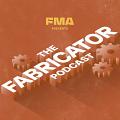
All Episodes
-
 Ep. 053
Ep. 053 -
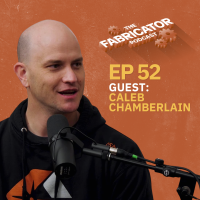 Ep. 052
Ep. 052 -
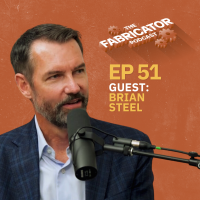 Ep. 051
Ep. 051 -
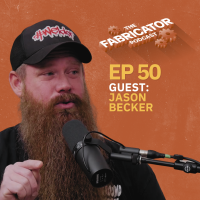 Ep. 050
Ep. 050 -
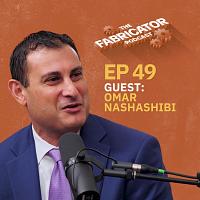 Ep. 049
Ep. 049 -
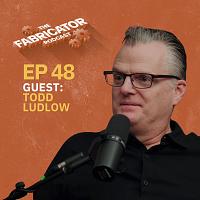 Ep. 048
Ep. 048 -
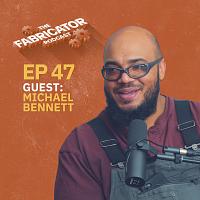 Ep. 047
Ep. 047 -
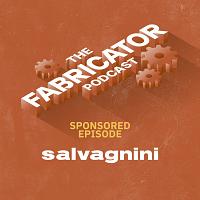 Bonus
Bonus -
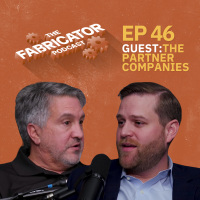 Ep. 046
Ep. 046 -
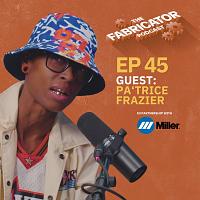 Ep. 045
Ep. 045 -
 Ep. 044
Ep. 044 -
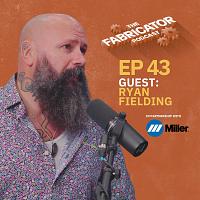 Ep. 043
Ep. 043 -
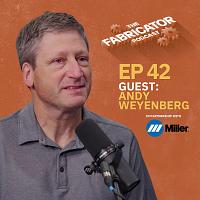 Ep. 042
Ep. 042 -
 Ep. 041
Ep. 041 -
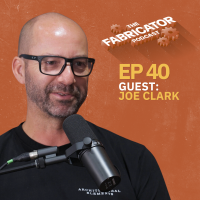 Ep. 040
Ep. 040 -
 Ep. 039Making art and helping inspire future welders with Staci Martinez
Ep. 039Making art and helping inspire future welders with Staci Martinez -
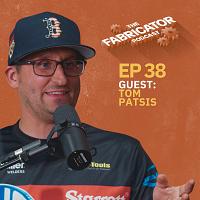 Ep. 038
Ep. 038 -
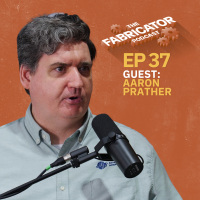 Ep. 037
Ep. 037 -
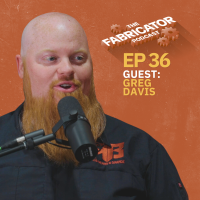 Ep. 036
Ep. 036 -
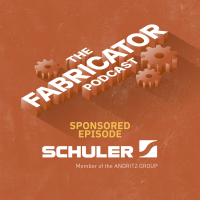 Bonus
Bonus -
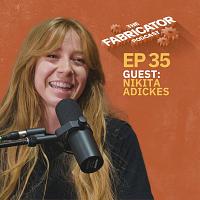 Ep. 035
Ep. 035 -
 Ep. 034
Ep. 034 -
 Ep. 033
Ep. 033 -
 Ep. 032
Ep. 032 -
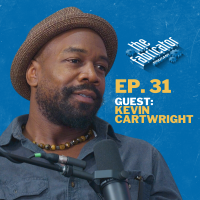 Ep. 031
Ep. 031
























